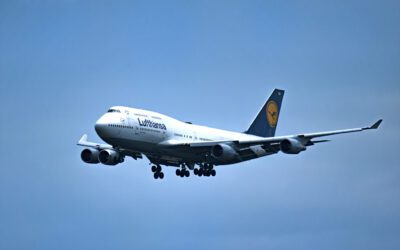Crucial and costly mistakes while planning, booking and preparing for a cruise can cost cruisers dearly. This week, I’ve got 9 pre-cruise mistakes for you to learn about and avoid that friends, family, readers and I have made in the past.

This week I’m discussing the worst of the pre-cruise mistakes that too many people continue to make. Learn from these mistakes so you can avoid them yourself and have a great cruise.
Don’t book a cruise with friends who have never been your travel companions. It could end up in a lost friendship.
Not making a test run with new travel companions:
Some readers have told me that they’ve literally lost best friends due to taking a week-long cruise with their former besties, not realizing all have drastically different ideas about what makes a great cruise. My wife and I have terrific friends who we know are great to be with to go to shows, concerts or even an overnight visit somewhere, but who are absolutely, positively incompatible on a real trip, particularly a journey lasting more than two nights.
It’s fairly easy to determine if you and your friends are journey-compatible. Take a long weekend, at least three nights together, and see what happens. Come to an agreement on a long weekend outing that has some similar traits to the longer trip you’re contemplating taking together. Before departing, promise each other that if you determine you’re incompatible travelers, that you’ll still be friends.
Scheduling a tight flight arrival time for embarkation:
Cruises are generally different than most other trips. For most land trips, if you arrive a few hours late you can be accommodated. If you’re late to your ship’s embarkation port sailing, it could cost plenty.
A friend of mine, several years ago, scheduled their flight from New York to land in Los Angeles just four hours before their ship sailed to Hawaii. The flight was delayed due to bad weather. They landed at Los Angeles International two hours after the ship sailed. Then it hit them. Their ship was going to be at sea for the next five days. They bought expensive last minute plane flights to Hawaii and booked a hotel to wait for the ship to arrive there. Of the 16-night cruise, they missed five nights — 31 percent of the cruise — and of course, there was no refund for the missed time on the cruise or reimbursement for their flight, hotel or meals.
My rule of thumb for cruises leaving from a domestic port is to be in the port of embarkation at least a day in advance, but two is preferable. For international ports of embarkation I schedule to be there three days in advance or longer. Those rules have saved me from missing several cruises. Over the years, I know of hundreds who have missed their cruise ship embarkation and some who have missed their cruise altogether, each due to late or canceled plane flights that were scheduled to arrive at the port of embarkation shortly before the ship was to sail.
Read your cruise contract carefully, including the fine print, and as soon as you book the cruise, sign up for travel insurance.
Cruise contract fine print reading failures:
There is crucial information in the fine print in cruise contracts. Among the data usually found there, is information about cancellations, the cruise line’s rules of cruiser responsibilities and a statement of cruise line liability for last minute itinerary changes (they have none), etc. Cruisers need to be fully prepared in case of problems and know the rules.
Skipping travel insurance:
Cruises, particularly ones to exotic locations, especially if they are longer cruises or ones that require expensive international plane flights, can be very expensive, unlike a couple weeks vacation at a nearby seashore. My cruises typically last ten days to three weeks, occasionally longer, meaning they aren’t inexpensive.
I always purchase trip insurance that can be cancelled for any reason and all risk, if possible, from a highly reputable insurance company, when I make my initial reservation for the cruise. I always include medical coverage, too. If you’re traveling internationally and you’re a senior citizen from the U.S., please remember that Medicare doesn’t cover you outside the U.S.
Before you book your cruise, research its ports to make sure you’re cruising at the right time of year. While you’re researching, check your destination’s health requirements, too.
Not scheduling the cruise for the right season:
We purposely scheduled our Antarctica cruise for late December so we could see and photograph penguins hatching. You can’t see that in November. If you want to see Humpback whales at Hawaii, schedule your trip from January through March, the middle of the season. If you want to be sure to see polar bears in the Svalbard Archipelago you need to be there between May to August, with June to July being the best time.
Research before you book, so you’ll sail during the ideal time for the sights you’re interested in seeing.
Not researching and following health restrictions:
Sometimes locations that you’re visiting have stringent health restrictions for which you must take specific health steps. For example, if you’ve been visiting Brazil, then fly to Ecuador to go to the Galapagos, everyone over a year old needs a yellow fever vaccination. Without the vaccination you won’t be allowed to enter Ecuador.
Take your passport on every international cruise in case of emergency and don’t forget to check its expiration date to be sure it meets your destinations’ requirements.
Leaving your U.S. Passport at home if cruising internationally from a U.S. port of embarkation:
While you’re permitted to use a Passport Card for closed loop cruises beginning and ending from the U.S. that go to specific international ports, it’s unwise to do so.
If you need to fly back to the U.S. due to an emergency, you won’t be able to use a Passport Card. You’ll need a U.S. Passport. My rule of thumb is to always use my U.S. Passport when traveling internationally by car, or ship, whether or not it’s required, in case of emergency. Passports are always required for international plane flights.
Not checking your passport expiration date:
You can’t travel on an expired passport or return to your home country. Moreover, many countries require that your passport doesn’t expire for as long as six months after you depart their nation to be allowed to enter their country. You must know both your passport’s expiration date and the passport requirements for each of your destination countries to be sure your journey won’t be stopped before it starts or ends prematurely.
Be careful when choosing your cabin for your cruise.
Not choosing your ship’s cabin deliberately:
I can tell you personally that you don’t want to stay in a cruise ship cabin near a restaurant or elevator. I found that out many years ago on my first two cruises. Other poor cabin locations are below, above or near nightclubs or casinos (noise), below the pool deck (noise), near the bow (extra ship movement) or with an obstructed view.
By avoiding the above pre-cruise mistakes, you can help make your cruise an enjoyable journey with few, if any, problems. Avoiding the mistakes will take careful research and planning. Next week, I’ll have another batch of cruise mistakes that too many cruisers make during their cruise.
(Image: Copyright © 2024 NSL Photography. All Rights Reserved. Adelie penguin with chick in center next to rock in the rookery at Brown Bluff, Antarctica, a tuya located at the northern tip of the Antarctic Peninsula. (The chick is all black.))
After many years working in corporate America as a chemical engineer, executive and eventually CFO of a multinational manufacturer, Ned founded a tech consulting company and later restarted NSL Photography, his photography business. Before entering the corporate world, Ned worked as a Public Health Engineer for the Philadelphia Department of Public Health. As a well known corporate, travel and wildlife photographer, Ned travels the world writing about travel and photography, as well as running photography workshops, seminars and photowalks. Visit Ned’s Photography Blog and Galleries.



